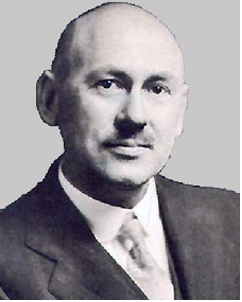Dr. Robert H. Goddard
 Dr. Robert H. Goddard was born in
Worcester, Massachusetts on October 5, 1882. Known as the father of U.S. rocketry, he began to speculate on a
means of reaching the fringes of outer space through the use of rockets, while a student at Worcester Polytechnic
Institute.
Dr. Robert H. Goddard was born in
Worcester, Massachusetts on October 5, 1882. Known as the father of U.S. rocketry, he began to speculate on a
means of reaching the fringes of outer space through the use of rockets, while a student at Worcester Polytechnic
Institute.
By 1909, he had already anticipated achievements such as staged rockets, manned and unmanned spacecraft, and the establishment of a manned station on the moon. Between 1914 and 1916, he elaborated on the fundamental theory of rocket flight and experimented with small solid-propellant rocket motors.
He began developing liquid rocket fuel and in 1926, launched the world's first liquid-propelled rocket. He demonstrated that rockets operated more efficiently in a vacuum than in atmosphere and developed the theory of rockets composed of several stages as a means of reaching the moon.
During World War II, the U.S. Navy employed Dr. Goddard to develop rocket motors and jet-assisted take-off devices for aircraft. He was engaged in this work until his death in 1945. In 1962, The National Aeronautics and Space Administration dedicated the Goddard Space Flight Center at Greenbelt, Maryland, to Dr. Goddard in recognition of his efforts in pioneering rocket development.